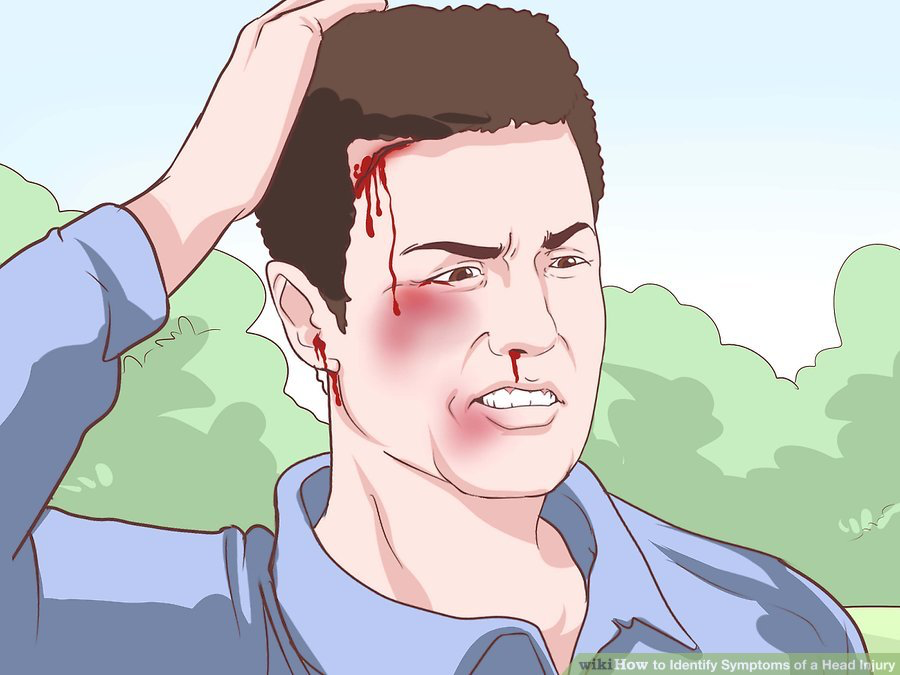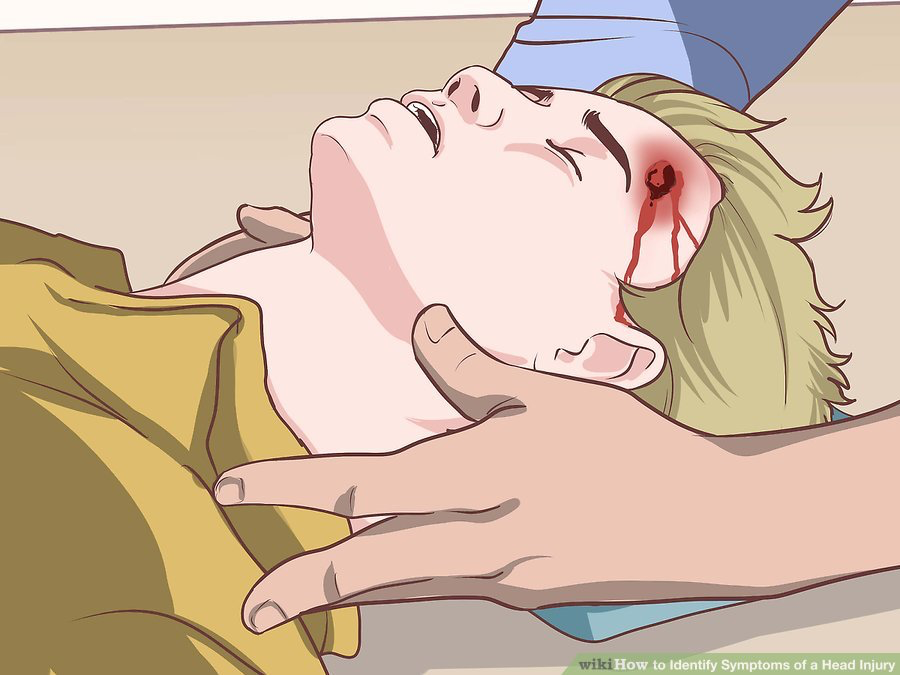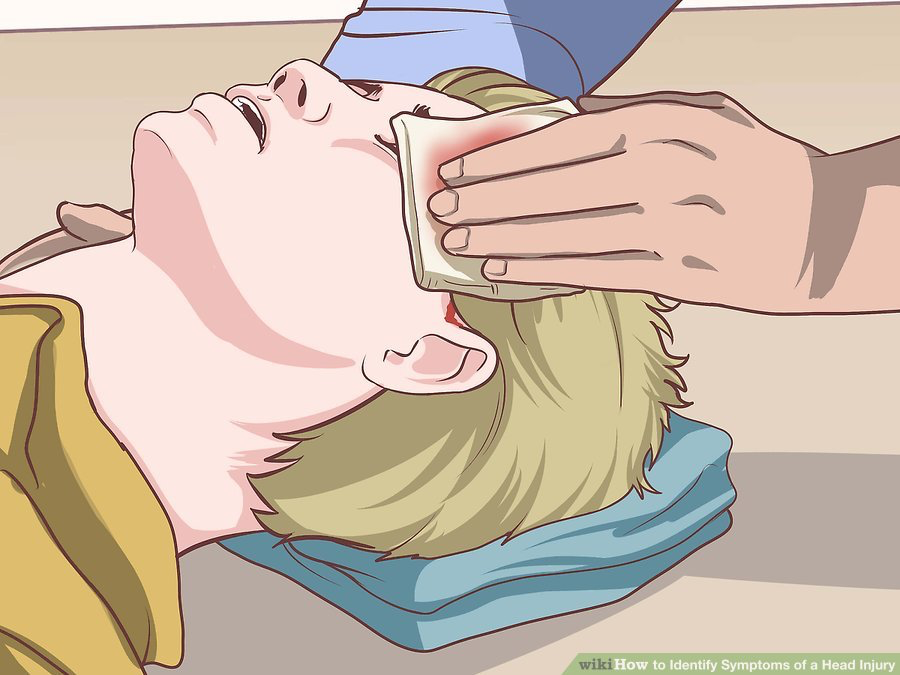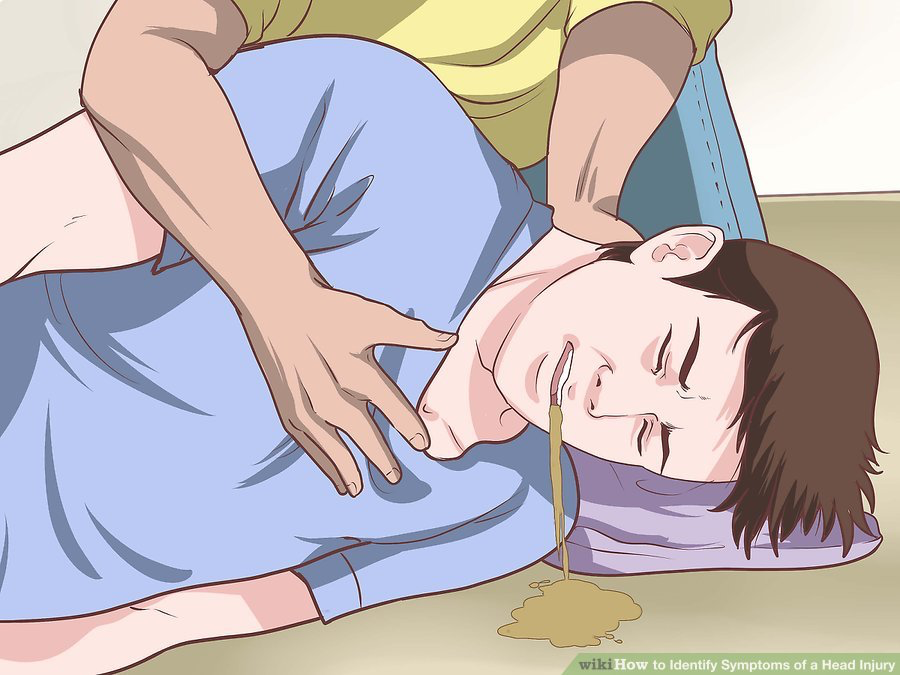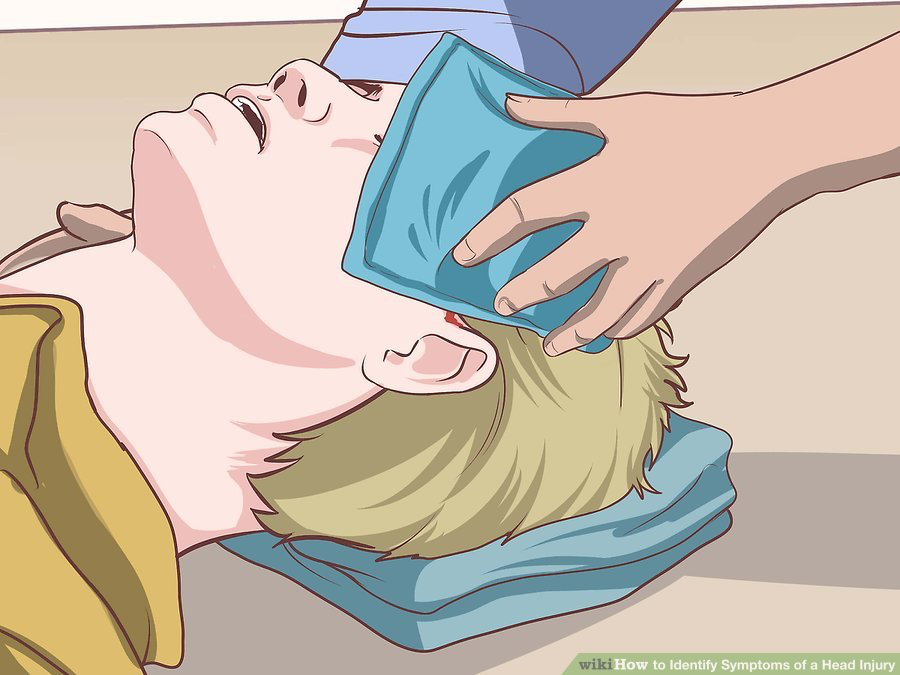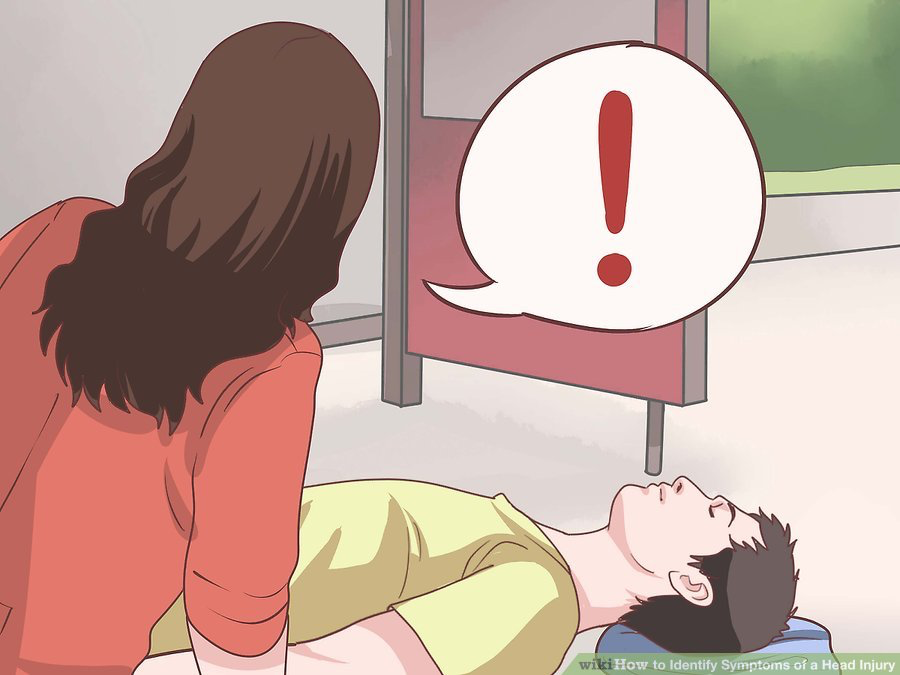Back First Aid Explained
How to Identify Symptoms of a Head Injury

We have selected the following expert medical opinion based on its clarity, reliability and accuracy. Credits: Sourced from the website wikiHow. Please refer to your own medical practitioner for a final perspective, assessment or evaluation.
Overview
Head injuries are any sort of trauma that happens to your brain, skull, or scalp. These injuries can be open or closed and range from a mild bruise to a concussion of the brain. It can be difficult to properly assess a head injury just by looking at a person and any head injury is potentially serious. However, by looking for potential signs of a head injury through a brief examination, you can identify the symptoms of a head injury and get prompt care.
Part 1: Looking for Signs of Injury
1. Be aware of your risk
Head trauma can happen to any person who bumps, bangs, or scratches his or her head. Injuries can happen as a result of car accidents, falls, collisions with other individuals, or simply bumping your head. Although most head trauma results in minor injuries and don't require hospitalization, it's still important to check yourself or any person after a mishap. This can help ensure that you don't have a serious or potentially life-threatening head injury.
2. Check for external injuries
If you or another person have any type of accident or mishap that involves their head or face, take a few minutes to do a thorough search for external injuries. This can alert you to injuries that require immediate attention and first aid as well as any that may become a more serious problem. Make sure to thoroughly check every part of the head using your eyes and by gently touching the skin.
Such signs might include:
- Bleeding from cuts or abrasions, which can be severe because the head more blood vessels than any other part of your body
- Bleeding or fluid leakage from the nose or ears
- Black-and-blue discoloration below the eyes or ears
- Bruising
- Bulging bumps, sometimes called 'goose eggs'
- Foreign objects lodged in the head.
3. Observe physical symptoms of injury
In additions to bleeding and bumps, there are other physical signs that a person may have a head injury. Many of these can indicate a serious external or internal injury. The signs may be present immediately or develop over the course of a few hours or days and require immediate medical attention.
Make sure to watch yourself or another person for:
- Cessation of breathing
- Severe or worsening headache
- Loss of balance
- Loss of consciousness
- Weakness
- Inability to use an arm or leg
- Unequal pupil size or abnormal eye movements
- Seizures
- Persistent crying in children
- Loss of appetite
- Nausea or vomiting
- Lightheadedness or spinning sensations
- Temporary ringing in the ears
- Becoming very sleepy
4. Watch for cognitive signs of internal injuries
Physical signs of injury are often the easiest way to identify a head injury. In some cases, you may see no apparent cuts or bumps or even experience headache. However, there are other potentially serious signs of head injury for which you should watch.
Seek medical attention if you see any of the following cognitive symptoms of head injury:
- Memory loss
- Changes in mood
- Confusion or disorientation
- Slurred speech
- Sensitivity to light, sound, or distractions.
5. Continue to monitor for symptoms
It's important to recognize that you may not detect any symptoms of a brain injury. The signs may also be subtle and not appear for several days or weeks following the trauma. For this reasons, it's important to keep watch on your health or that of a person who had any type of accident related to the head.
- Ask friends or family members if they have noticed any potential symptoms in your behavior or can see visible physical signs such as discolored skin.

Part 2: Administering Care for Head Injuries
1. Seek medical attention (See "EMERGENCY NUMBERS" above)
If you recognize any symptoms of a head injury and/ or have any doubts about it, see a doctor or call emergency services. This can ensure that you do not have any serious or life-threatening injuries and get proper treatment.
- Call emergency services if you notice any of the following signs: severe head or facial bleeding, severe headache, loss of consciousness or breath, seizures, repeated vomiting, weakness, confusion, unequal pupil size, or black and blue discoloration below the eyes and ears.
- See your doctor within a day or two of any serious head injury, even if it didn't require emergency attention. Make sure to tell your doctor about how the injury occurred and any measures you've taken to relieve it at home, including pain medications or administering basic first aid.
- Be aware that the precise identification of the type and severity of a head injury are next-to-impossible for a first aider to assess. Internal injuries require assessment by medical specialists at appropriate medical facilities.
2. Stabilize the head
If someone has a head injury and is conscious, it's important to stabilize his or her head while you are providing care or waiting for medical attention. Placing your hands on both sides of the person's head can keep it from moving and causing further injury as well as allow you to provide any necessary first aid.
- Place a rolled up coat, blankets, or articles of clothing next to a victim's head to stabilize it if you are providing first aid.
- Keep the person as still as possible with the head and shoulders slightly elevated.
- Avoid removing any helmet a victim is wearing to prevent further injury.
- Avoid shaking a person, even if he or she seems confused or loses consciousness. You can simply tap the person without moving him or her.
3. Stop bleeding
If there is any bleeding with either a serious or non-serious injury, it's important to control it. Apply clean bandages or cloths to get bleeding from any type of head injury.
- Use firm pressure to apply the bandages or cloths unless you suspect a skull fracture. In this case, simply cover the bleeding site with a sterile dressing.
- Avoid removing bandages or cloths. If the wound bleeds through any dressings, simply place a new one over the old cloth. You should also avoid removing any debris from the wound. If there is a lot of debris, lightly cover the wound with bandages.
- Be aware that you should never wash a head wound that is bleeding a lot or is very deep.
4. Deal with vomiting
There may be vomiting present with some head injuries. If you've stabilized the head and the person begins vomiting, you'll need to prevent choking. Rolling the person on to his or her side as one unit can minimize the risk of choking by vomiting.
- Make sure to support the person's head, neck, and spine as you roll the individual to the side.
5. Apply ice packs for swelling
If you or another person has swelling at the site of a head injury, use ice packs to reduce it. This can control inflammation and any pain or discomfort the person is experiencing.
- Place ice on injury for 20 minutes at a time up to three to five times a day. Remember to get medical attention if the swelling doesn't decrease within a day or two. If the swelling gets worse, is accompanied by vomiting and/ or severe headache, seek immediate medical attention.
- Use a commercial ice pack or fashion one with a bag of frozen vegetables or fruit. Remove if it gets too cold or causes you pain. Putting a towel or cloth between your skin and the pack can prevent discomfort and frostbite.
6. Monitor the victim continuously
If a person injured his or her head, it's a good idea to keep an eye on the person for a few days or until medical professionals arrive. This can alert you to provide assistance if the person's vital signs change. It can also reassure and calm the injured person.
- Watch for any changing in the person's breathing and alertness. If the person stops breathing, begin CPR if you are able.
- Keep talking to the person to reassure him or her, which can also help you recognize and changes to speech or cognitive ability.
- Make sure any victim of a head injury avoids alcohol consumption for 48 hours. Alcohol can obscure potential signs of serious injury or a deterioration in the person's condition.
- Remember to get medical attention if you are unsure about any change in the condition of someone with a head injury.
_______________________________________________________________________________________________________________________
Are you a healthcare practitioner who enjoys patient education, interaction and communication?
If so, we invite you to criticise, contribute to or help improve our content. We find that many practicing doctors who regularly communicate with patients develop novel and often highly effective ways to convey complex medical information in a simplified, accurate and compassionate manner.
MedSquirrel is a shared knowledge, collective intelligence digital platform developed to share medical expertise between doctors and patients. We support collaboration, as opposed to competition, between all members of the healthcare profession and are striving towards the provision of peer reviewed, accurate and simplified medical information to patients. Please share your unique communication style, experience and insights with a wider audience of patients, as well as your colleagues, by contributing to our digital platform.
Your contribution will be credited to you and your name, practice and field of interest will be made visible to the world. (Contact us via the orange feed-back button on the right).
Disclaimer:
MedSquirrel is a shared knowledge, collective intelligence digital platform developed to share medical knowledge between doctors and patients. If you are a healthcare practitioner, we invite you to criticise, contribute or help improve our content. We support collaboration among all members of the healthcare profession since we strive for the provision of world-class, peer-reviewed, accurate and transparent medical information.
MedSquirrel should not be used for diagnosis, treatment or prescription. Always refer any questions about diagnosis, treatment or prescription to your Doctor.


